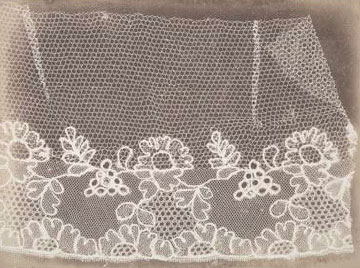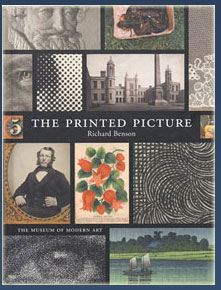- Relief printing
- Intaglio and planographic printing
- Color printing
- Bits and pieces
- Early photography in silver
- Non-silver processes
- Modern photography
- Color notes
- Color photography
- Photography in ink: relief and intaglio printing
- Photography in ink: planographic printing
- Digital processes
- Where do we go from here?
Silver salts: printing-out process and latent image

Salted-paper. William Henry Fox Talbot. Lace. 1845. 6 1/2 x 8 3/4" (16.5 x 22.2 cm). The Museum of Modern Art, New York. Gift of Dr. Stefan Stein. The first paper photographs were made without cameras, by placing objects directly on paper that had been sensitized with silver salts. Light darkens the silver salts in proportion to the amount of exposure, creating an image that requires no development. The tonal values of the image are reversed, but when this “negative” is printed in contact with another sheet of sensitized paper, it produces a positive print of the same size.
The first paper photographs were contact prints of objects. The small Talbot print of lace that we see to the left, made in 1845, is a negative image, made by pressing the lace against a sensitized sheet of paper. Where the lace blocked the light, no silver deposit was formed; in other areas, where light struck the paper, it darkened. By a happy coincidence, the lace, white but opaque, looks like a positive in this reversed print.
The early paper photographic processes utilized two types of silver response—they started out as printing-out processes but quickly adapted to the use of the latent image. Talbot’s first camera-made pictures were on silver chloride–coated paper that darkened directly as it was exposed. It was apparent from the start, though, that this would only work with long exposures, and that even then the camera would have to be tiny because no large lenses with relatively large apertures existed that could provide adequate exposure for a big picture. Within a few years Talbot and other workers had figured out how to use latent images, exposing the paper lightly and then developing a strong image afterwards through chemical treatment. This way pictures could be made with exposures of a minute or less, making paper photography practical. At the same time, however, all the early users of paper-based photography made their prints using the other method—allowing the agency of light to darken the paper with no later development of the image.

